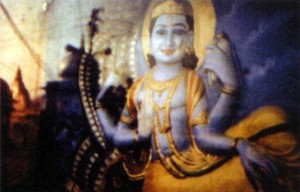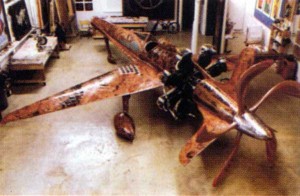For ‘Flash Art’ Magazine
The history of art often boils down to an account of groups of artists who lived and worked in proximity to each other. Occasionally, those who leave the fold (think Gauguin when he set sail for Tahiti) interrupt this narrative. Situated just across the East River from Manhattan, Queens isn’t exactly the South Pacific. But most of the borough is off the map for the Manhattan-centric art world and, apart from Long Island City, there are few ‘artist neighborhoods’. “Queens International” gathered over forty independent spirits who choose to live and/or work in Queens in a group exhibition as diverse as its name suggests.
Tom Finkelpearl, the Museum’s new director, makes a point of avoiding competition with art venues in or near Manhattan. Instead of devising a counterpart to last year’s “Brooklyn!” show of young artists based in that borough, he and the other curators focused on the Museum’s unique selling point: the incredible cultural diversity of surrounding immigrant communities. The resulting exhibition featured artists from fifteen different countries and included work as diverse as Jaishri Abichandani’s small-scale photographs of young people in India and New York and thick oil paintings combining classical Chinese painting styles with the techniques of Van Gogh and Monet by Zhang Hongtu.
A slide projection of photographs by six different artists drove home the point that you don’t need to leave New York City to see the world. One highlight was Audrey Gottlieb’s shot of a Brahmin priest laying a stone statue of the elephant god in Flushing Meadows Lake, which looks like it could have been the bank of the Ganges. Elsewhere, Evie McKenna’s photos of quirky New York houses exemplify American outsider architecture and Gerard Gaskin’s photographic portraits of the residents of LeFrak City housing project lend a dignity to the sitters that belies the project’s rough reputation.
Although the participants ranged from Yale MFAs to artists who had rarely, if ever, exhibited their work, there were not dramatic fluctuations in the quality of the artwork. This speaks for the diversity of contemporary art itself and the mainstreaming of ‘outsider’ art as well as the curators’ success in drawing from a pool of untapped talent. Formal similarities also helped homogenize the show, linking Gilberto Triplett’s minutely detailed, organic abstractions to nearby drawings by John Morris. Obsessive devotion to detail tied together Emily Jacir’s hand embroidered tent listing the names of 418 Palestinian villages evacuated by Partition and James Johnson’s hand crafted, 29 foot long copper repousse replica of an airplane. Unlike recent curatorial experiments (remember “Black Romantic” at The Studio Museum?), the curators at Queens Museum might have discovered a way to simultaneously appeal to an art world audience and the larger community.
Hi Merrily,
Fast forward – it’s now just over 6 years since you wrote the above review – I came across it and want to thank you for mentioning my photograph projection of images of Queens, including the solemn Brahmin priest (whom I met in plainclothes a few weeks later on the subway train!) Only in New York! Audrey